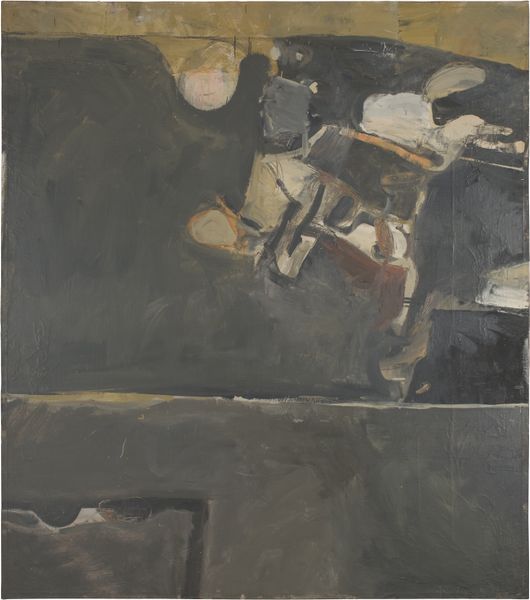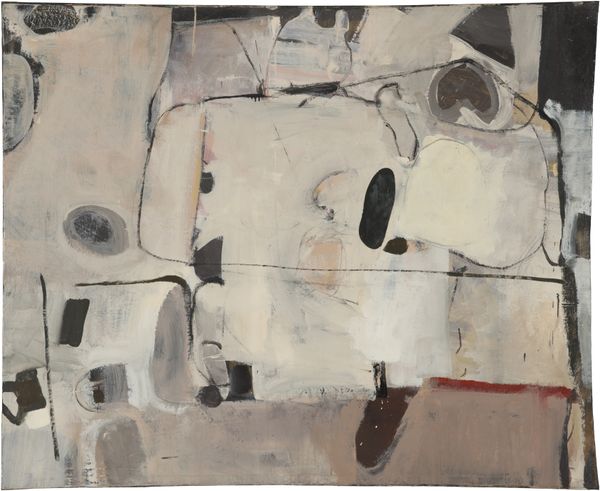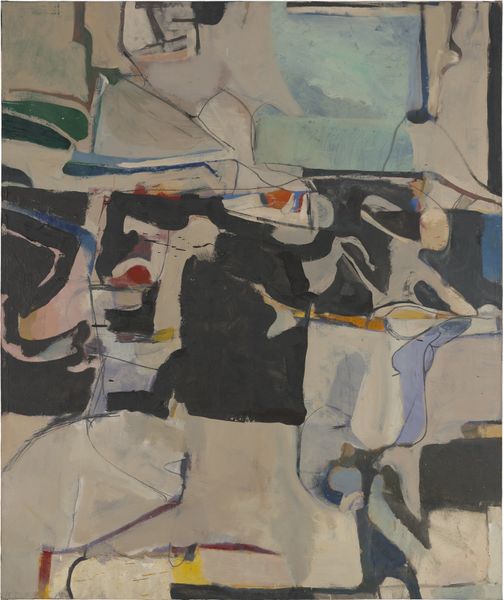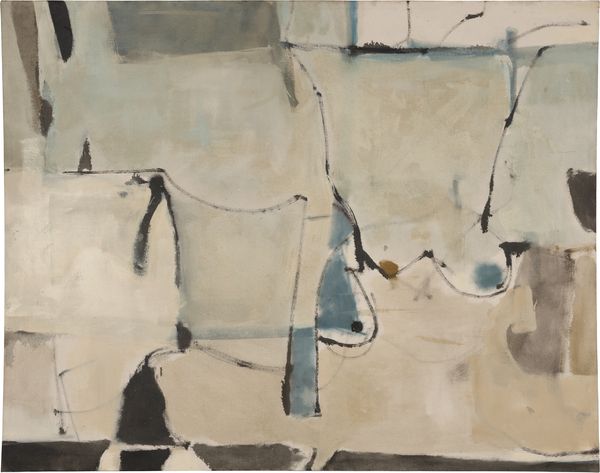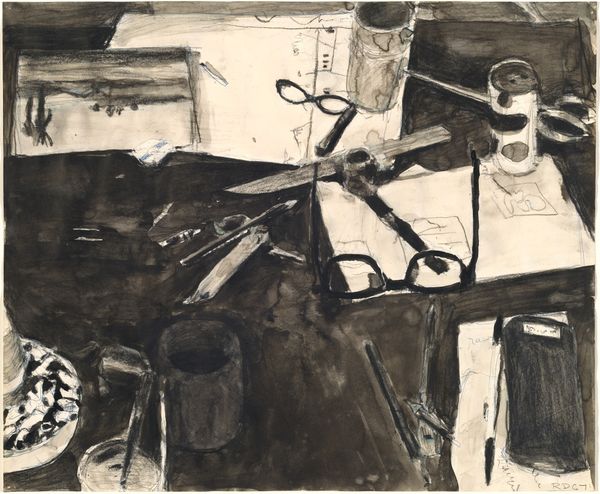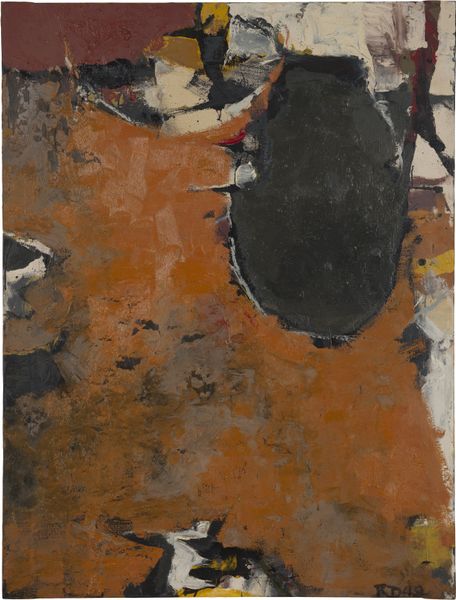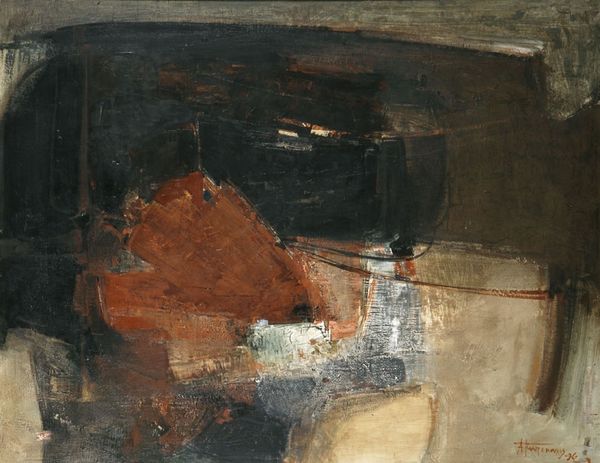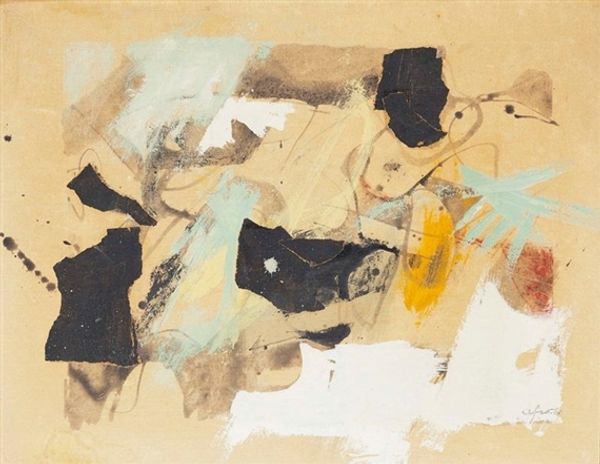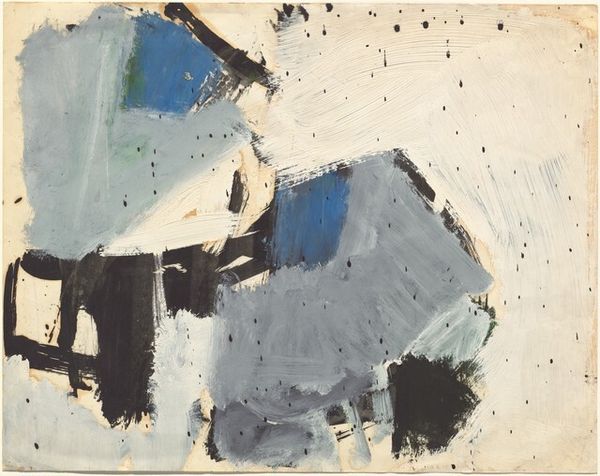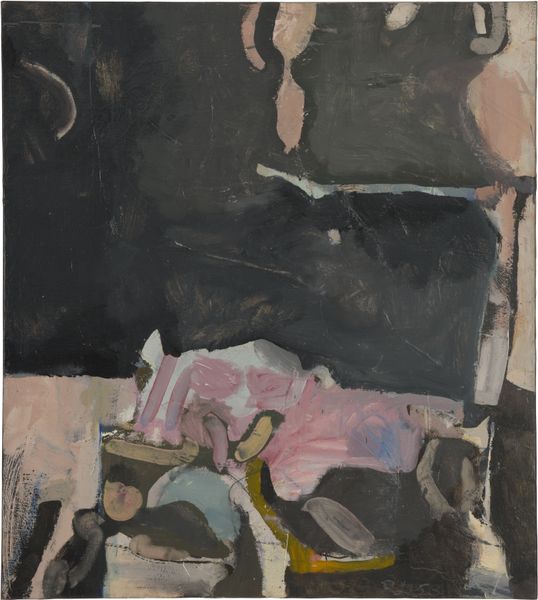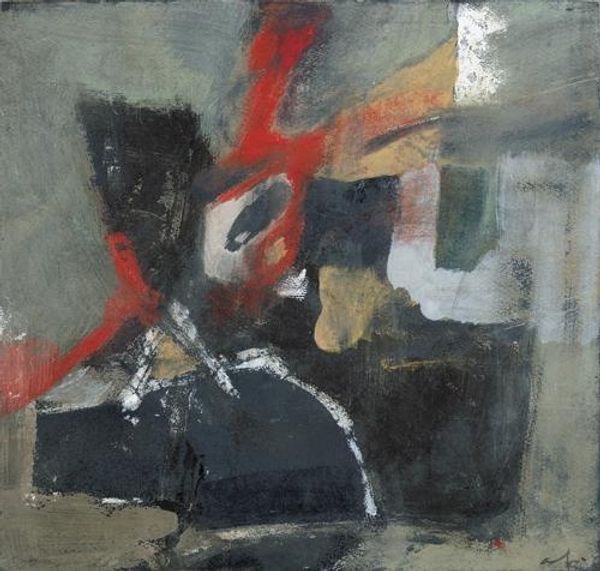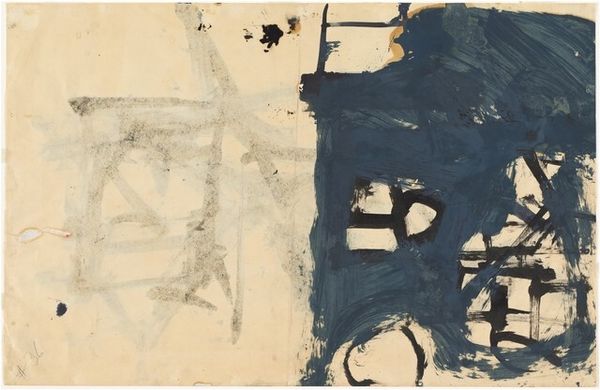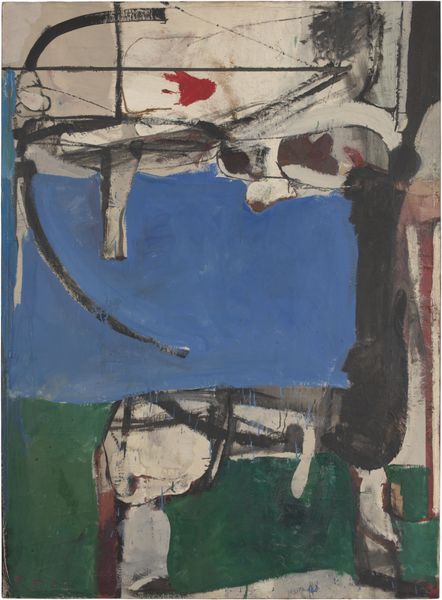
painting, oil-paint, impasto
#
abstract-expressionism
#
rough brush stroke
#
painting
#
oil-paint
#
form
#
oil painting
#
impasto
#
bay-area-figurative-movement
Dimensions: 138.4 x 144.8 cm
Copyright: Richard Diebenkorn Foundation
Curator: We’re standing before Richard Diebenkorn’s “Albuquerque #20,” an oil on canvas he created in 1952. Editor: It strikes me immediately with its somber mood—almost a monochrome palette punctuated by these pale pinks and stark whites. Curator: Indeed. The piece is a superb example of Abstract Expressionism, which moved beyond explicit representation to explore raw, subjective emotion through the materiality of the paint itself. Look closely— you can see Diebenkorn’s energetic brushstrokes and the impasto technique used. Editor: I am particularly drawn to these material gestures, because they serve as physical records of the artist’s labor. This act of creation wasn’t just about the final image. How does the landscape of post-war America, particularly in the Southwest, shape an artist like Diebenkorn, processing through such tactile gestures on the canvas? Was this about engaging with new possibilities and materials to create an artwork to move art forward, maybe as a new commodity for a different kind of collector? Curator: It is a question of available raw materials, and their use. Many view abstract expressionism as detached from explicit social narratives, focusing more on the pure, elemental qualities of form and color. It is undeniable that social anxiety found outlets through such experimental practice. Diebenkorn translates a unique blend of form and affect with very little information given directly to the viewer. Editor: I can’t disconnect artistic expression from social context. Artists like Diebenkorn were not living in a vacuum and the influence of place like Albuquerque, is significant. To be able to trace such materiality is critical, so viewers of diverse racial backgrounds and differing lived experiences have an invitation for interpretation of a painting like this. Curator: An invitation rooted in the concrete conditions of art production. Editor: Precisely. What does a society permit the creation and acceptance of—and what kind of artist does that context then cultivate? I value tracing those processes here in order to understand Abstract Expressionism within a social framework. Curator: I agree that thinking about this form is essential—it’s certainly more engaging that trying to view it simply in aesthetic isolation. Editor: Exactly, it enriches our reading so much.
Comments
No comments
Be the first to comment and join the conversation on the ultimate creative platform.
